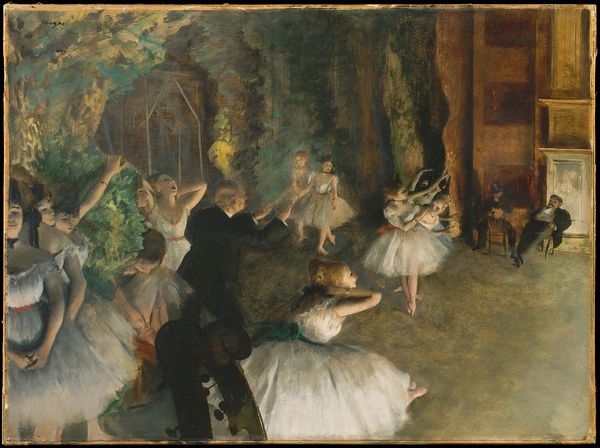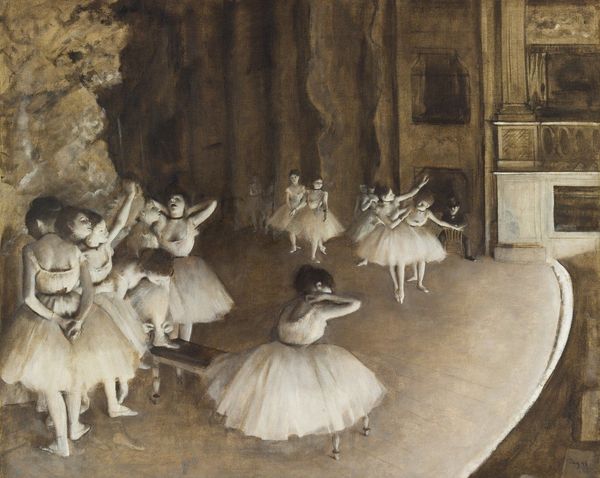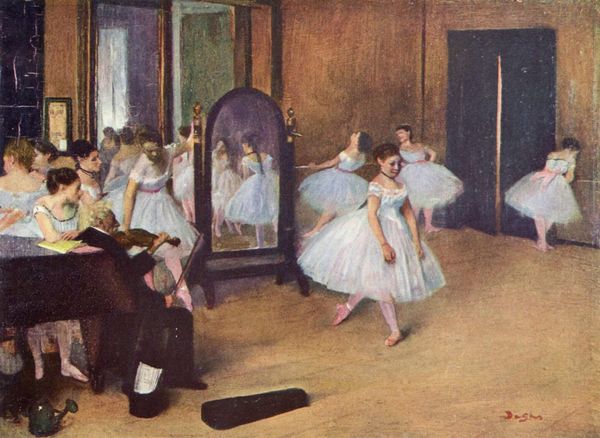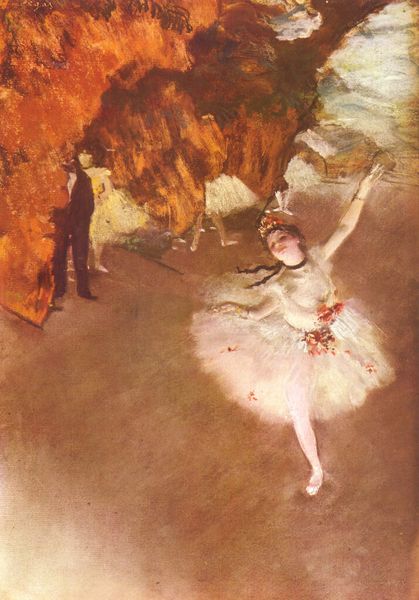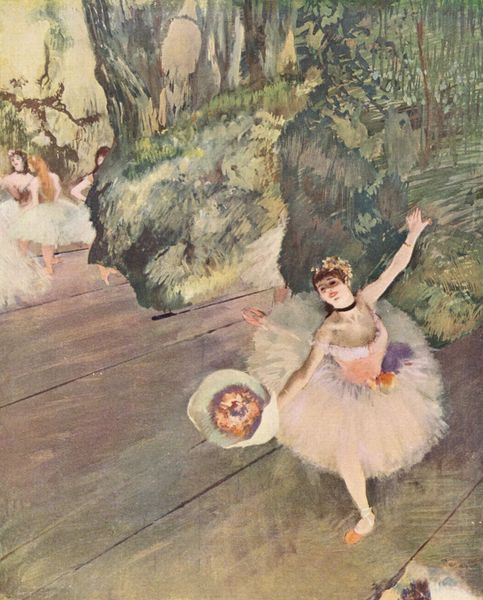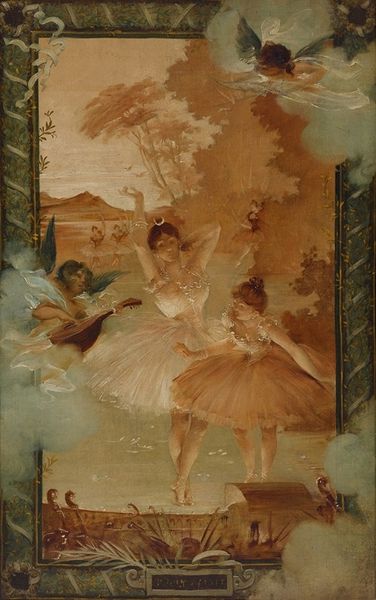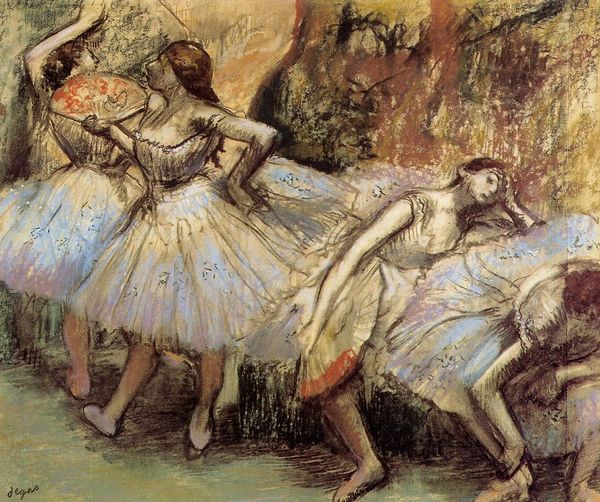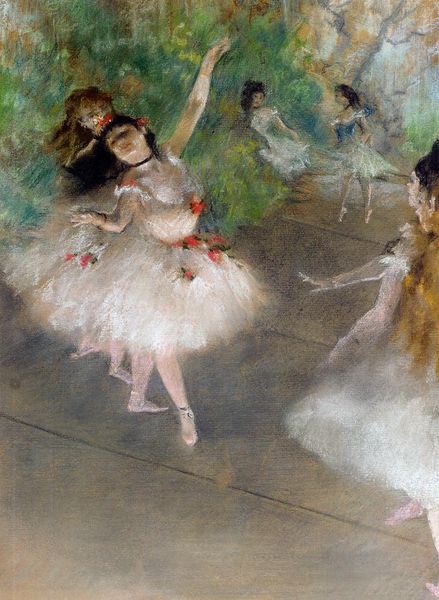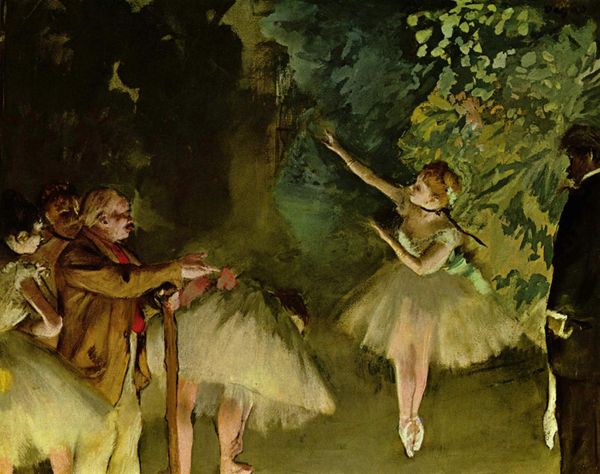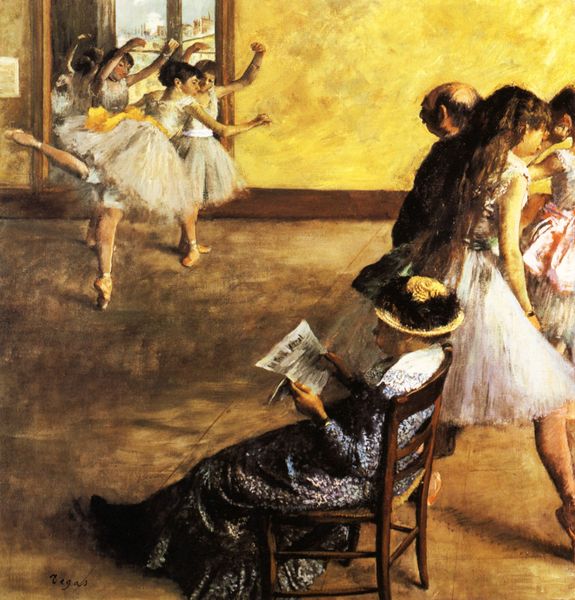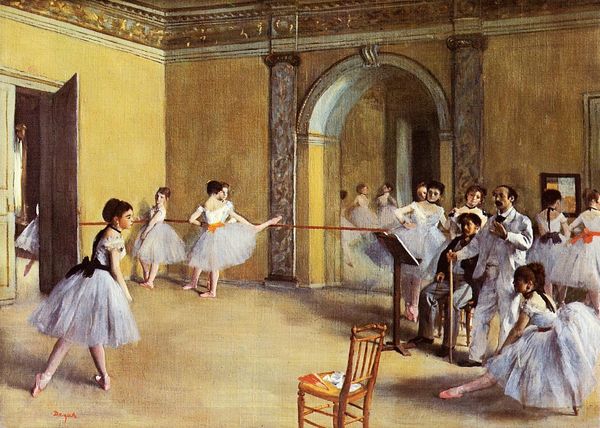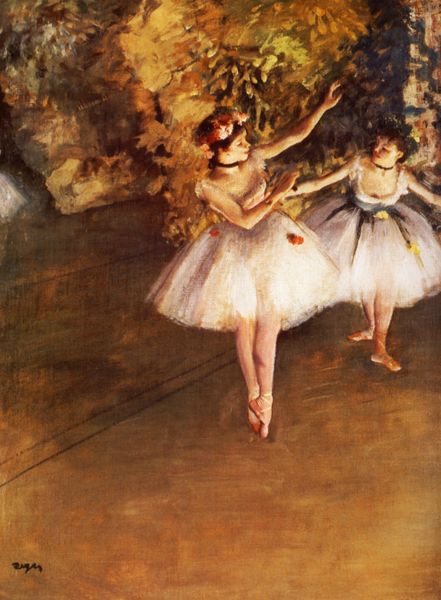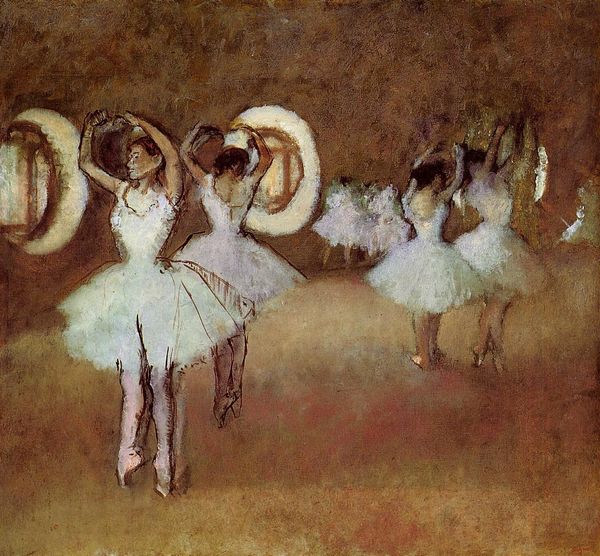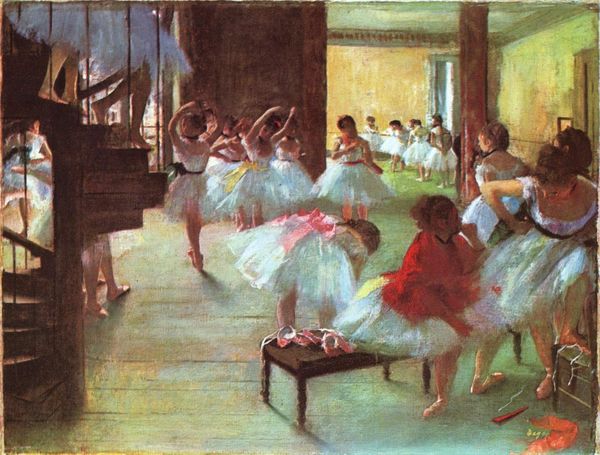
painting, oil-paint
#
portrait
#
impressionistic
#
painting
#
impressionism
#
oil-paint
#
cityscape
#
genre-painting
Dimensions: 52.1 x 70.8 cm
Copyright: Public domain
Curator: Right in front of us, we have Edgar Degas's "The Rehearsal of the Ballet on Stage," created in 1874. It is currently housed here at the Metropolitan Museum of Art. Editor: The stage feels cavernous, almost oppressive. The dancers are like fragile, fluttering moths trapped in this… dusty old attic. Is that how Degas felt about the ballet? Curator: Not exactly. Degas was indeed captivated by ballet dancers. However, this wasn’t necessarily about capturing beauty alone; it’s about revealing a narrative, or the backstage reality, so to speak. Notice how some dancers stretch or adjust their costumes, exhausted—human. The instructor’s gestures feel both controlling and guiding. Editor: Right, and the observers off to the side... I mean, are they patrons, or just guys hanging around hoping to catch a glimpse? It gives a voyeuristic feeling, even though they're right in the scene. Curator: That's precisely what makes Degas a sharp observer of modern life. The arrangement hints at certain unspoken social dynamics within the Parisian ballet world. There's also his use of color. The predominance of earthy, muted hues contrasts with the pastel tints of the tutus, subtly underscoring the dichotomy between artifice and reality. The color balance guides our attention, wouldn’t you agree? Editor: Absolutely. The composition also feels so unconventional. Like, he just chopped off half the dancers, and some figures are really in shadow! But it adds to the sense of immediacy. Like a snapshot instead of a carefully posed scene. Curator: Precisely! It shows a Japanese print aesthetic; that asymmetrical layout suggests movement beyond the picture plane, almost cinematic! Degas wanted to capture an essence of everyday life and all its haphazard moments, avoiding classical ideals of symmetry or flawless form. The layers go beyond aesthetics and delve into societal observations. Editor: So, more about seeing the working parts of an exquisite artifice. It does make you think about everything unseen that makes that 'perfection' possible... interesting. Well, I see this ballet in a different way now! Curator: Indeed! Hopefully, that will stay with everyone as they consider the symbolic meanings layered throughout this scene!
Comments
No comments
Be the first to comment and join the conversation on the ultimate creative platform.
